Let’s get this out of the way first. The Perdigon nymph that has taken over competition fly fishing, thanks to both Spanish and French Euro-nymphers, has officially found its way to the four corners of the trout-fishing universe.
In December, an Argentine guide tied one to my tippet under a Chernobyl, and I spent an afternoon on the lower Rio Chimehuin catching fat rainbows and browns, seemingly at will. I began to think of the Perdigon as the “new” San Juan Worm. Rarely have I seen a fly work so well when nothing else seems to work at all.
When I got back to the lodge later that gusty Patagonian day, I did a little Spanish-to-English translation and discovered that the little nymph’s name was actually similar not to the San Juan Worm but to an even more maligned fly. Perdigon is “pellet” en Espanol.
Oy.
Frankly, though, I didn't see the resemblance, at least not when compared to the pellets I used to buy by the handful for the kids to toss to raceway rainbows at the local fish hatchery. Today’s Perdigon nymphs can be downright beautiful flies tied with anything from thread and wire to peacock or other fowl quills and tailed with coq de leon (although I find this to be more of a traditional ingredient rather than a functional requirement).
As it turns out, perdigon refers to lead pellets, as in lead ammunition. The origin of the Perdigon nymph's name isn't due to its resemblance to a food pellet, but to its similarity to lead ammo—both of which sink to the bottom of the river with abandon thanks to their heavy weight.
The sleek nymphs, sometimes tied on jig hooks, sometimes not, sink like stones and are favored by high-stickers because they move through the water column quickly with little resistance. Often coated with a thin layer of UV resin, Perdigons slice through the water and dive into the feeding zone faster than traditional nymphs. It’s no wonder they’re all the rage, even well off the grid on the edge of the Andes.
Candidates for potential matches? Small snails, maybe. Small and slender larval nymphs are another possible match. Chironomids, perhaps, particularly in lakes.
It’s probably best to chalk the Perdigon up as a simple attractor, and I’ve seen a number of versions that back up that assertion. Some patterns are tied with “hot spots” behind the head of the fly, and others take advantage of UV-activated resins that pick up sunlight and kind of rebroadcast it under water.
I think the Perdigon opens itself to some creativity at the vise, and, honestly, they aren’t too difficult to craft. With a glass of whiskey and an open mind, even a ham-handed vise monkey like me can crank out a dozen nymphs in an hour or so.
The one thing that everyone seems to be certain of, though, is that Perdigons work. While the competition community uses Perdigons while high-sticking or Euro-nymphing, the guides in Patagonia were just as content to put these quick-sinkers under attractor dries. The trout didn’t seem to mind one way or the other.
One afternoon on the Collon Cura, the Perdigon worked when almost nothing else did. Even the famous “red nymph” (the worm) that Argentinian guides sheepishly use as the last resort, particularly when guiding inexperienced anglers in Patagonian waters, failed to match the Perdigon in a few instances. I came home a convert and have tied up several dozen in the month or so that I’ve been back stateside.
There are innumerable Perdigon patterns, and, as I noted, these nymphs lend themselves to your own creativity. I’ve taken to tying an olive-green version with a bright chartreuse “hot spot” right behind the brass bead that serves as the fly’s head. I’ve seen the flies tied with bright orange and even yellow hot spots, too—more proof that anglers are likely using the fly as an attractor rather than a bug that imitates anything specific.
While not always necessary, particularly in the riffle-and-run environment here in eastern Idaho where I fish, most Perdigons are tied with a bit of weight—either a tungsten bead or even some (preferably) non-lead wire. This adds to the fly’s versatility for nymphing anglers. The whole point of the Perdigon is get down and bounce along the bottom, where trout are looking for food that drifts right to them.
Here in Idaho, tied in sizes 14 and 16, I’ve had good luck with winter browns and rainbows on the Henry’s Fork, and, predictably, our native whitefish like the flies, too. Here, even in those larger sizes, the nymphs are likely mistaken for midge larvae or big Blue-winged Olive larvae—both are common during winter months in the shadow of the Tetons.
But Perdigons have become a year-round staple for nymphers. Given the fly’s propensity to dive quickly and slice through the current, the Perdigon is an excellent pattern to use in two-nymph rigs, too. On the Henry’s Fork last November, I put it below the venerable Girdle Bug under an indicator while drifting the river, and it helped make a slow day on the water tolerable.
If you haven’t tried the Perdigon and think maybe it’s just another fad, get past that assumption. It’s a competition-angling staple, and there should be a home for it in your nymph box.





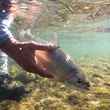






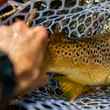







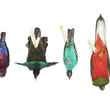
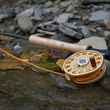



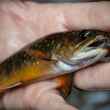
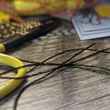


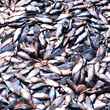
Comments
Manuel Martínez Cid replied on Permalink
The origin of the name "pellet" is not due to its similarity with lead ammunition, which sinks rapidly in the water thanks to its weight, it is because a competition fisherman from northern Spain, more specifically from the region from Asturias, he told another fisherman also from competition, that there would be hands that he was going to deliver some nymphs he had tried successfully. The fisherman, seeing a handful of nymphs in his hands, exclaimed, sorry! , referring to vanes or ammunition used for compressed air shotguns. These nymphs - pellets in their origin imitated the natural nymphs of the Bétids. The black tear behind the metal ball represents the alar sack of mature natural nymphs about to hatch. Over time, new materials and new patterns have been incorporated that have nothing to do with the original "pellets". A greeting from Spain.
Andy C replied on Permalink
Very nice. I like that it sinks quickly due to it's smoothness, and that it's skinny like the real thing. A lot of nymph patterns are too "fat" imo.
Bob replied on Permalink
In Arkansas we call that a Zebra midge
Jerry Joe replied on Permalink
Zebra midges dont have tails
TroutBum Trading Co replied on Permalink
Of course it's not a pellet fly. It's simply called what all nymphs are called " BAIT"
Pages